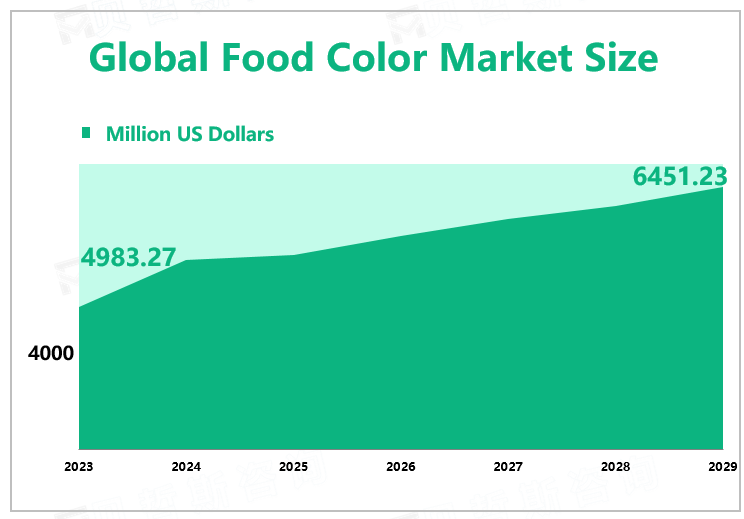Global Food Color Market Overview
According to Global Market Monitor, the global food color market size will reach $4983.27 million in 2024 and is expected to grow to $6451.23 million by 2029.Food coloring is a natural or synthetic additive that imparts color when mixed with food or beverages.
Influence of Regulations and Policies
Although artificial colors are associated with allergic reactions and other health problems, including changes in children's behavior, the FDA continues to allow them to be used in food. One of the most problematic dyes is Yellow #5, E102, lemon yellow, used to color soft drinks and energy drinks, cake mixes, salty snacks, cereals, packaged soups, and the like. Tartrazine has been banned in Norway, Austria, and Finland. To a certain extent, it will limit the development of food coloring.
In the United States, all food and beverage labels must list the artificial colors they contain. To indicate synthetic food colorants (or artificial dyes), they are designated as FDA-regulated FD&C (Federal Food, Drug, and Cosmetic) numbers.

The raw material extracts of natural color and the production process are complicated, which results in high production costs. In addition, as economic consumption develops, the per capita consumption level increases, and the wage requirements are continuously increased, thereby increasing the labor cost, resulting in the price of natural pigments relative to artificial pigments. High manufacturing costs limit the development of the food coloring market.
Market Competition
With the advent of food technology, various synthetic food colors can be used in processed food and beverage products, giving bright colors to processed food and beverage products. Synthetic colors are often the first choice for food and beverage manufacturers because they are cheaper and can be easily mixed to produce a variety of shades. However, consumers are increasingly turning to the promotion of natural pigments, and the demand for natural food pigments is growing. Technological improvements in the treatment of natural pigments are also rapidly developing to improve the performance of natural pigments.
|
Company Name |
BASF |
|
Website |
www.basf.com |
|
Established Time |
1985 |
|
Plants Distribution |
Germany |
|
Sales Region |
Worldwide |
|
Product Introduction |
Dow, SABIC, Sinopec |
|
News |
At the China International Food Additives and Ingredients Exhibition 2024, BASF showed innovations and sustainable solutions in its portfolio of nutrition and fragrance ingredients, including vitamins, carotenoids, food emulsifiers, and fragrance ingredients. |
We provide more professional and intelligent market reports to complement your business decisions.